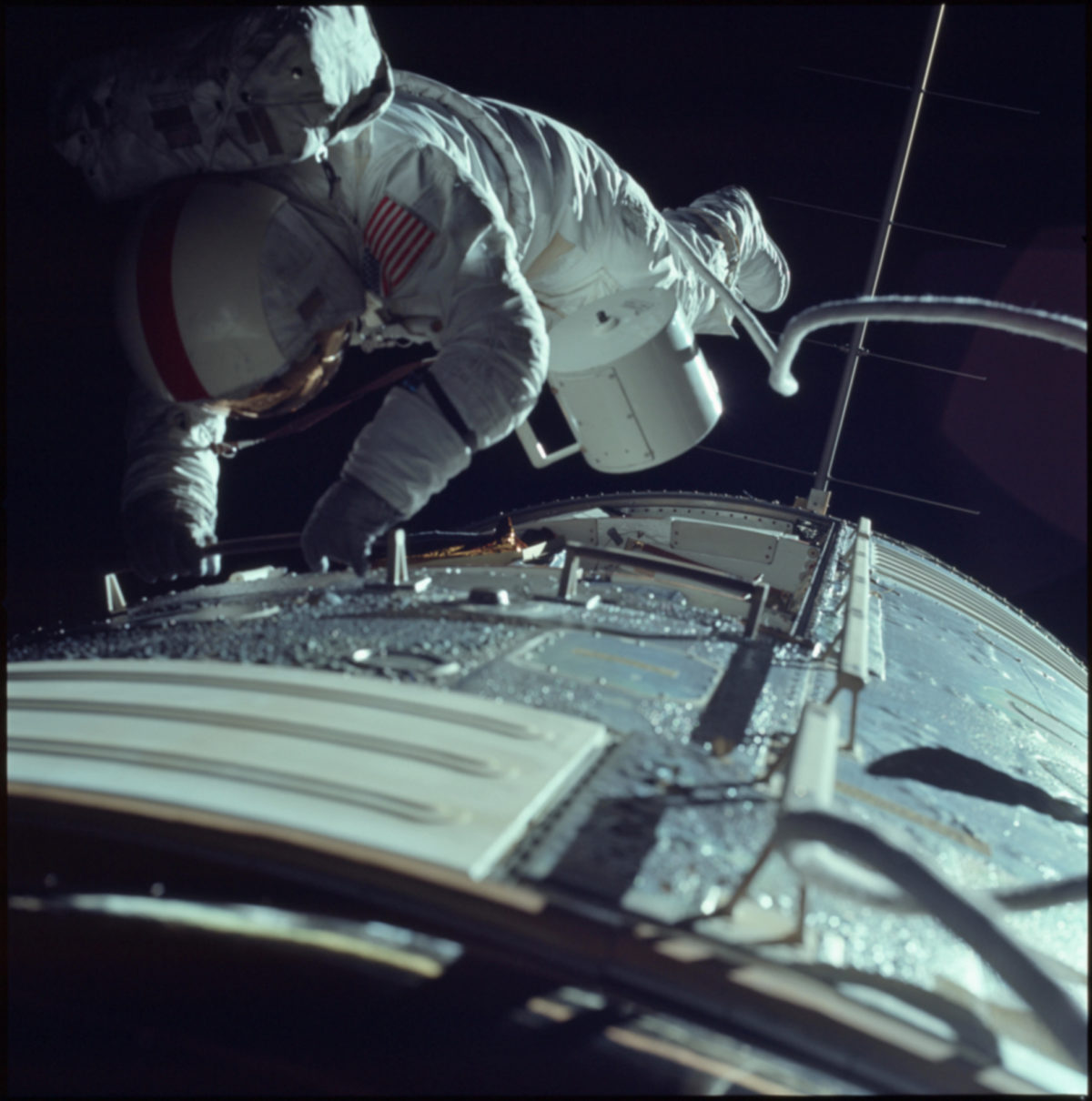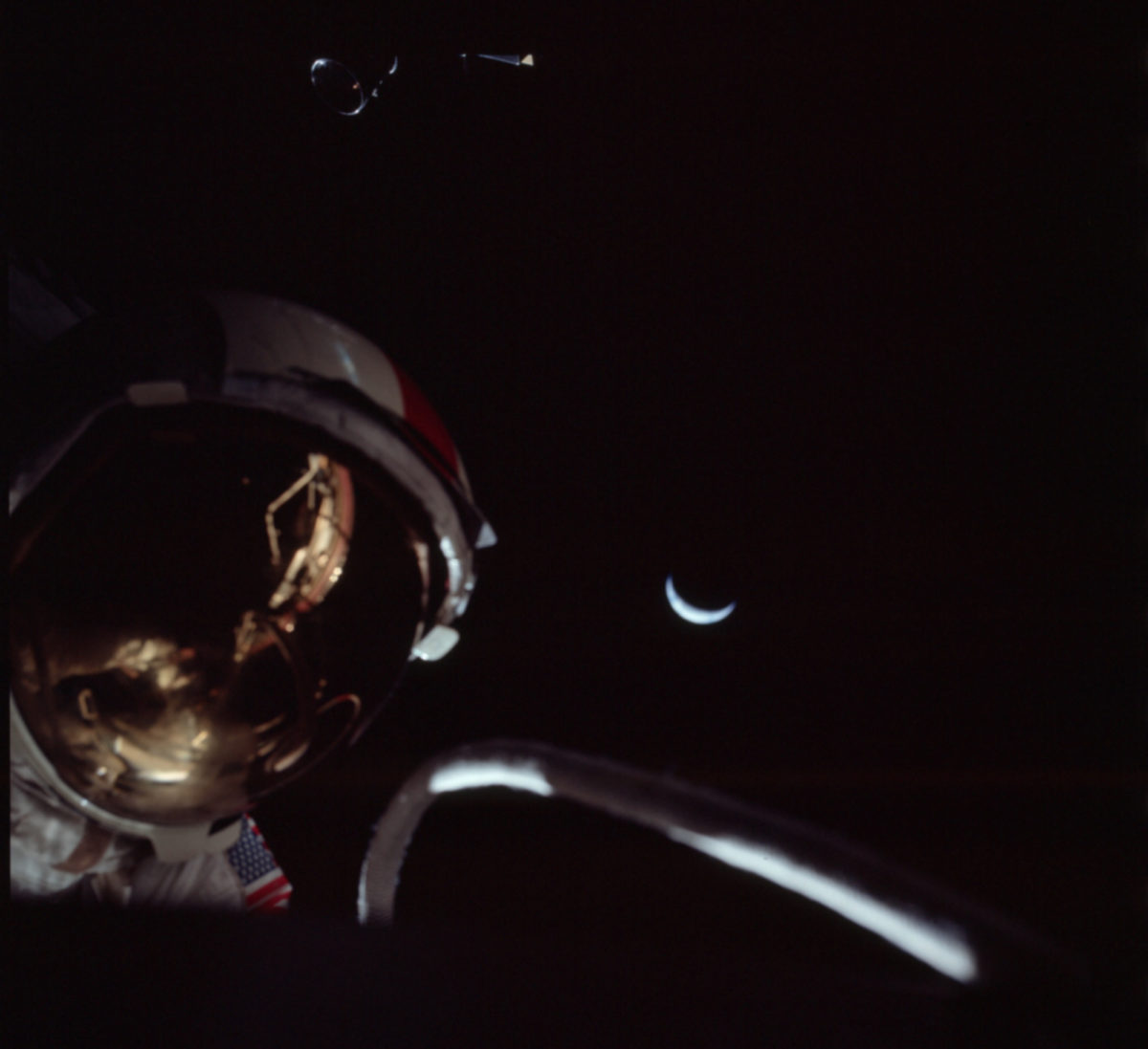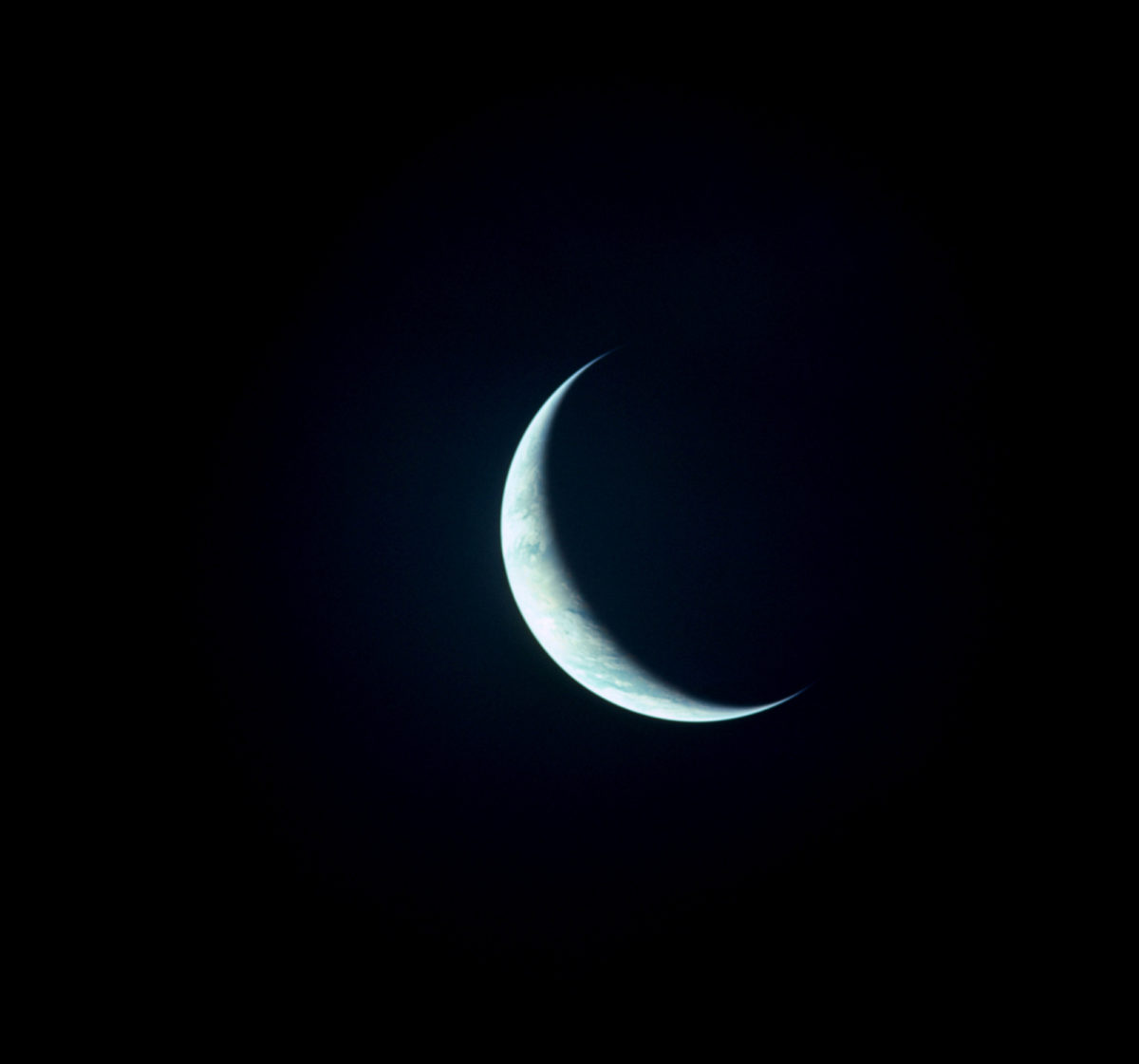Jason Davis • Mar 08, 2018
Throwback Thursday Funpost! A spacewalk in deep space
Lately, your faithful Planetary Society editorial staff has been thinking about ways we can spice up our weekly content routine. We don't post much hard news, and tend to focus on longer, analysis-oriented stories. That gets a little tedious! I spent a lot of this week laboring over a Space Launch System piece that I feel is very important and interesting, but sometimes I need to come up for air and marvel at a pretty picture.
So, as a palate cleanser, Emily and I are going to experiment with some weekly funposts: I’ll try some #ThrowbackThursday stuff, and she’s going to bring you #MoonMonday, featuring awesome pics of moons from around the solar system. We don’t know how long we’ll stick to this routine, but we’ll give it a shot and see!
Last week, I posted a Twitter thread with some cool Apollo pictures, and folks seemed to like it. So I thought I’d start my #ThrowbackThursday series by focusing on one scene in particular from those images: an astronaut performing a spacewalk IN DEEP SPACE:

That's Apollo 17 command module pilot Ron Evans, on December 17, 1972. The crew was on the way home, coasting through the void between Earth and the Moon. During Apollo 15, 16 and 17, the service module was outfitted with external cameras for lunar observations, and the film for those cameras had to be retrieved via spacewalk, since the service module gets discarded shortly before atmospheric reentry.
The only way to do a spacewalk from the command module was to depressurize the entire capsule. So, during Apollo 17, Ron Evans, Gene Cernan and Harrison Schmitt all had to suit up while Evans ventured outside. The spacewalk was brief, lasting barely an hour.
From Evans’ vantage point on the service module, he would have been able to see the Moon in one direction and the Earth in the other, simply by turning his head. How trippy is that? Many astronauts get vertigo when they first step outside the International Space Station. I don’t know whether the absence of Earth makes that any better or not!
Speaking of Earth, you can see it as a crescent in this picture, peeping over Evans’ shoulder:

And here’s a zoomed-in Earth picture from the same spacewalk:

I love that last photo because it’s similar to ones taken by planetary spacecraft. But in this case, an astronaut in the wilderness of cislunar space pressed the shutter release on an honest-to-goodness Hasselblad camera with color film, originally meant to be used by humans on Earth.
Evans died in 1990. As I was looking back through some of the Apollo 17 mission transcripts, I found this awesome exchange between him and Gene Cernan, right after the crew first reached Earth orbit. Cernan was asking Evans to remove some kind of optical cover, and Evans was completely distracted by the fact that he just got to space; Apollo 17 was his first and only spaceflight.
Cernan: Get that cover off.
Evans: Yes, I'm going to do that. [Garble] off.
Evans: Hot diggity dog.
Cernan: Did it go?
Evans: I can't believe we've made it up here.
Cernan: Did it go?
Evans: Ha ha!
Cernan: Did it go?
Evans: What?
Cernan: The optics?
Evans: I don't know. I haven't done it yet [laughter].
Finally, I want to share a new resource for cool Apollo pics. I used to rely on the Project Apollo Archive on Flickr, but Lise Guerriero recently pointed me to another archive on Datastro. Thanks!
Let’s Go Beyond The Horizon
Every success in space exploration is the result of the community of space enthusiasts, like you, who believe it is important. You can help usher in the next great era of space exploration with your gift today.
Donate Today

 Explore Worlds
Explore Worlds Find Life
Find Life Defend Earth
Defend Earth

